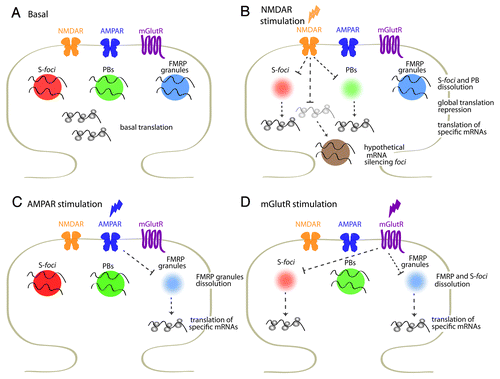Figures & data
Figure 1. SyAS-foci and translational regulation at the synapse. (A) Several mRNA-silencing foci, including S-foci, PBs and FMRP granules, among others, are present in dendrites and dendritic spines. S-foci are different from FMRP granules and PBs. The three kind of SyAS-foci may coexist in a single dendritic spine. (B-D) Distinct SyAS-foci respond to specific stimuli, dissolving and releasing specific mRNAs. Stimulation of NMDAR or mGlutR affect S-foci and FMRP granules, and activates the translation of CamKIIα, among others.6 About half of synapse-localized CamKIIα mRNA is associated to S-foci under resting conditions and is released upon NMDA stimulation and S-foci dissolution.6 In addition, CamKIIα mRNA is as well regulated by FMRP and PBs,30 opening the possibility of multiple regulation by distinct pathways. NMDAR stimulation provokes a global silencing, and the translation of a number of transcripts, including Kv1.1 mRNA among others, is repressed.6,36
